Engagement Rings
Consciously created diamonds for the real moments that matter
Find the perfect engagement ring
From the understated elegance of a simple design to the ornate splendor of an elaborate arrangement, every engagement ring we create is crafted with care and commitment — because timeless moments deserve timeless diamonds.
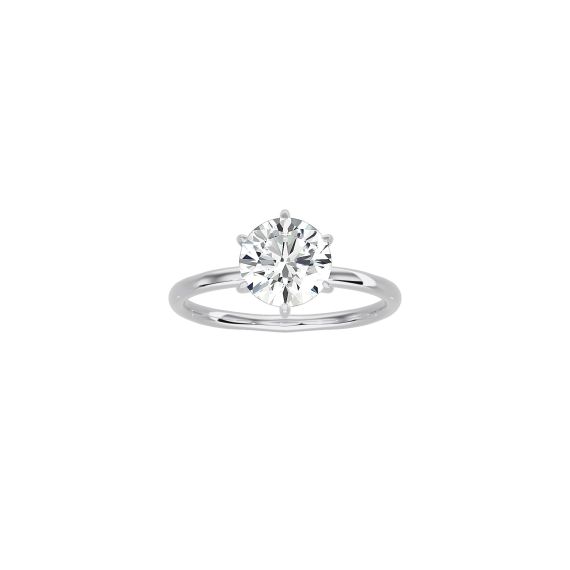
An iconic symbol of eternal love, the elegant solitaire ring features a single diamond set in a simple band. It’s the perfect style for brides who want to make a statement with understated, ageless grace.
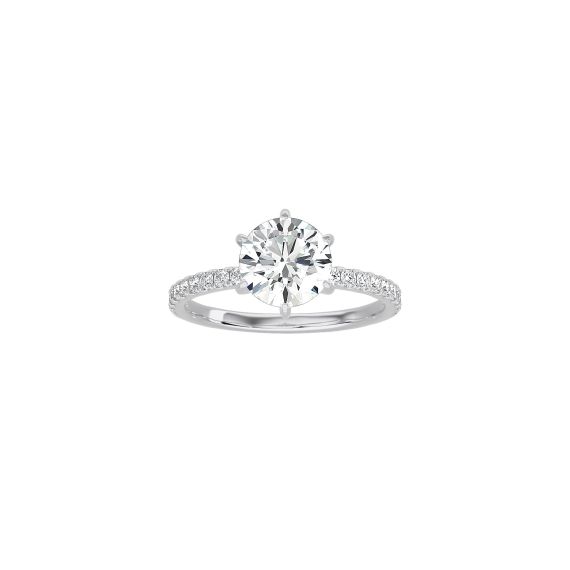
Small diamonds set in the band sparkle as they catch the light. The diamonds can wrap around the whole band (full pavé) or halfway down the band on either side of the stone (half pavé), bringing glitter to a simple design.
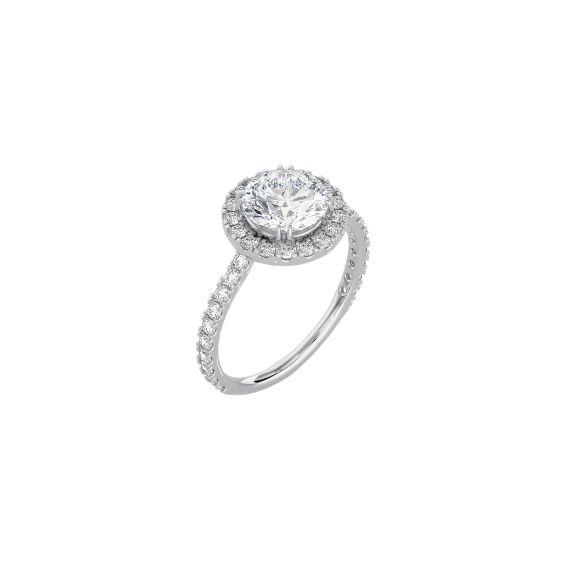
This shimmering, diamond-studded style encases your center stone with smaller diamonds that complement it. The eye-catching design adds the appearance of volume to the center diamond and can be made in a simple or pavé band.
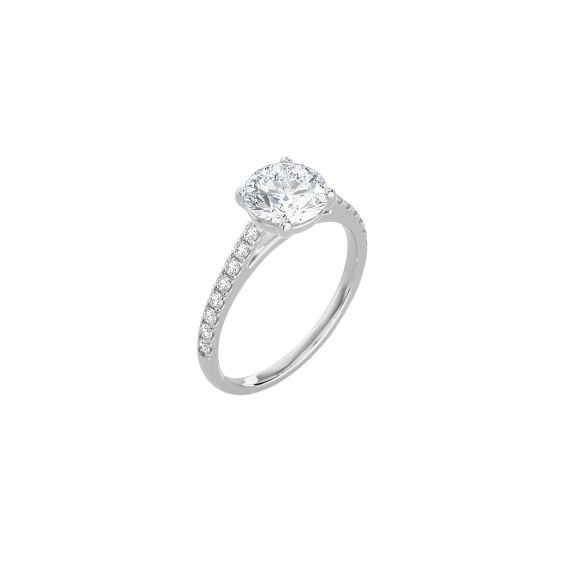
In this bold style, named after the grandeur of the cathedrals it resembles, two arches rise from the band to elevate the center diamond and give it prominence. A cathedral style ring can be made in a simple or pavé band.
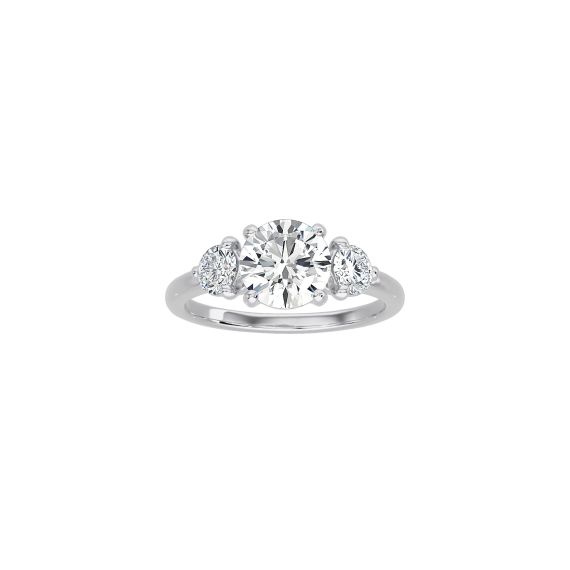
Adorned with a dazzling center diamond and two accent diamonds on either side, this modern classic style perfectly combines brilliance and beauty. With its timeless appeal, the three stone ring can be made in a simple or pavé band.
To ensure the ring is the right fit, you can find your ring size using just a few items at home. You’ll need a:
1. Ribbon
Wrap the ribbon around the base of the ring finger on your left hand and mark the points where the ribbon ends meet.
2. Ruler
Use a ruler to measure (in millimetres) the distance between the two points.
3. Pen
Check the table below to determine the corresponding ring size.
Tip: It’s best to measure your finger at 3 or 4 different times of day for the most accurate size, as your finger size will vary a bit throughout the day. Make sure the ribbon slides easily over your knuckles too, as they’re slightly wider than where the ring sits on your finger.
The quality of diamonds around the world is assessed by the 4Cs — cut, color, clarity and carat weight. They affect a diamond’s appearance and value, and every diamond is unique in terms of its qualities. When buying a diamond, you should understand how the 4Cs impact it so you can make an informed choice.
Learn more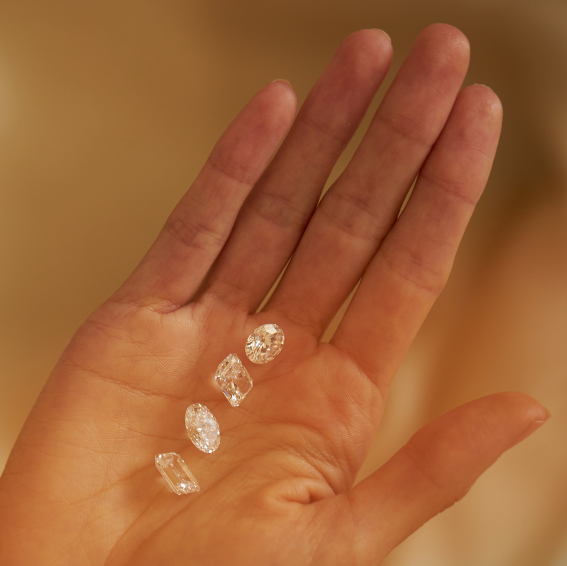
The quality of diamonds around the world is assessed by the 4Cs — cut, color, clarity and carat weight. They affect a diamond’s appearance and value, and every diamond is unique in terms of its qualities. When buying a diamond, you should understand how the 4Cs impact it so you can make an informed choice.
Diamonds come in a range of colors from white to rarer, fancy colors like pink and blue. White diamonds, the most popular kind, are ubiquitous in bridal jewelry. But even white diamonds can be tinted, and they’re graded on an alphabetical color scale from D (colorless) through Z (light yellow).
Colorless diamonds are of the highest quality, and their quality lowers as the yellow tint in the stone increases. At Itara, our diamonds have the color grading of H and higher.
Most diamonds contain small imperfections. When these imperfections are inside the diamond, they’re known as inclusions, caused because of the intense heat and pressure that create the diamond.
A diamond’s clarity is graded based on how visible these imperfections are, in a cut and polished diamond, to a skilled diamond grader under 10x magnification. Diamonds can range from the rare, flawless diamonds to those where inclusions are prominent and affect the diamond’s brilliance. Itara’s diamonds have a clarity grading from FL to SI1, which means that inclusions—if present—are minor and visible only under 10x magnification.
Carat weight refers to how much a diamond weighs, and 1 carat is equivalent to 200 milligrams. People often think of a diamond’s carat weight as its size, but two diamonds of different shapes can look like they’re different sizes at the same carat weight.
While a diamond’s price increases as its carat weight increases, it’s not the only quality that is a factor in the price and value of a diamond. A diamond with a smaller carat weight may be more expensive than one with a larger carat weight if it’s cut, color or clarity are superior.